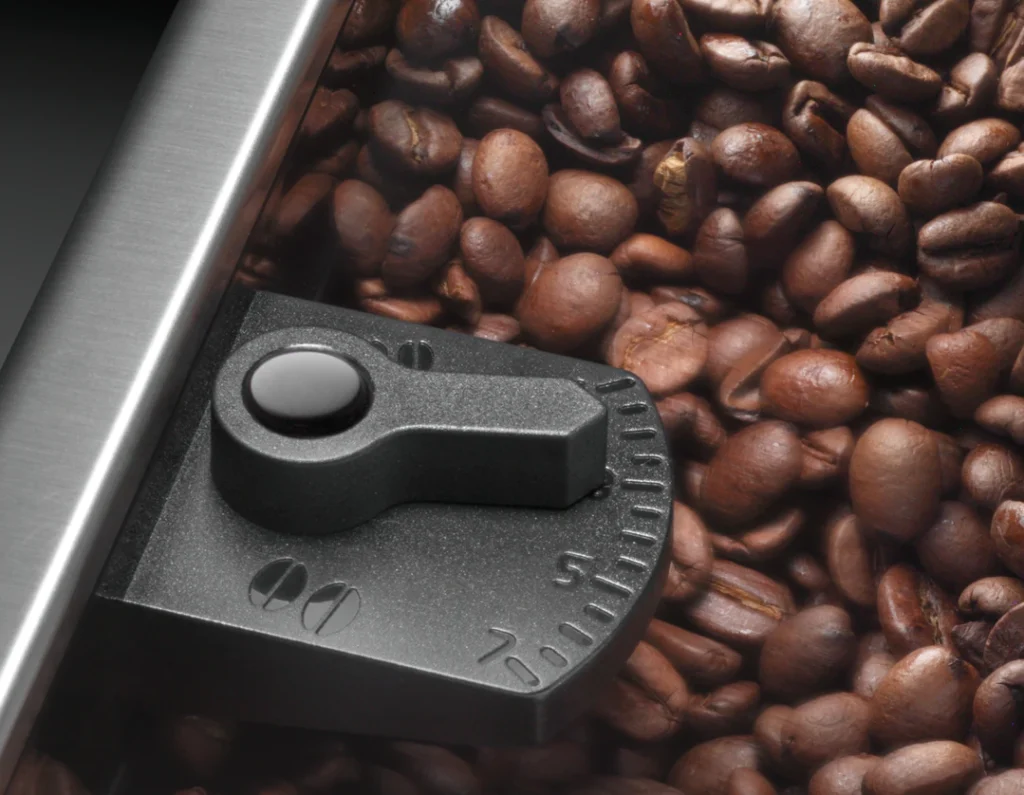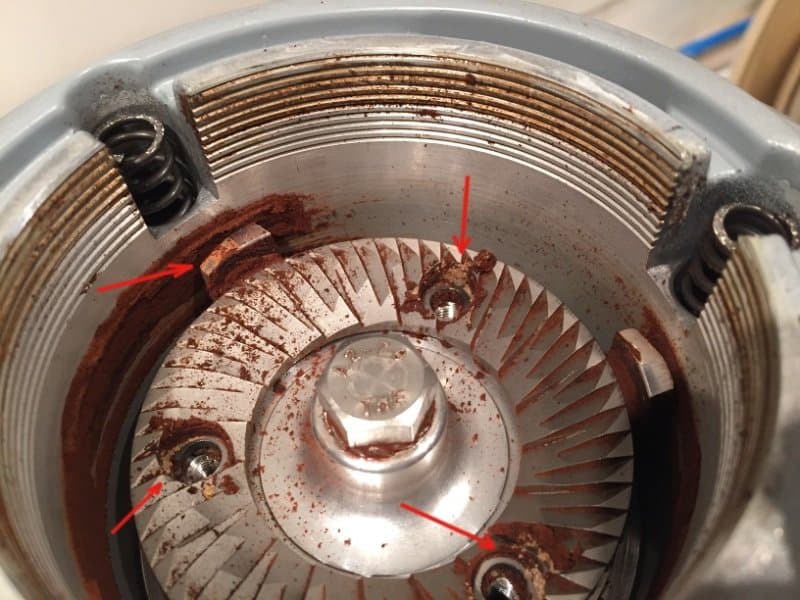Hey there, coffee enthusiasts! Today, we’re diving into the nitty-gritty of grinder settings and adjustments. If you’ve ever wondered why your coffee tastes different from one day to the next, your grinder might be the culprit. Let’s get into why understanding and adjusting your grinder settings is crucial for that perfect cup of joe.
First off, the grind size of your coffee beans plays a huge role in determining the flavor and strength of your brew. Think of it like this: the size of the coffee grounds affects how quickly water passes through them, which in turn affects how much flavor is extracted. Too fine, and you might end up with a bitter, over-extracted mess. Too coarse, and your coffee could taste weak and underwhelming.
Getting your grinder settings right isn’t just about avoiding bad coffee. It’s about unlocking the full potential of your beans. Whether you’re using a drip coffee maker, a French press, or an espresso machine, each brewing method demands a specific grind size. Mastering these settings can transform your daily coffee ritual into a delightful experience.

In this guide, we’ll break down how to fine-tune your grinder for different brewing methods, the impact of various settings, and some tips to ensure consistent results. So, grab your favorite beans, and let’s get grinding!
Different Grind Settings
Alright, let’s get into the grind—literally. Coffee grinders come with a range of settings from coarse to fine, each suited for different brewing methods. Knowing these settings and how to use them can elevate your coffee game to new heights.

Coarse Grind
A coarse grind is chunky and feels similar to sea salt. This setting is perfect for brewing methods that require a longer extraction time. Here are some examples:
- French Press: The French press method involves steeping coffee grounds in hot water before pressing them through a mesh filter. Coarse grinds prevent the coffee from becoming too bitter and help keep the grounds from slipping through the filter.
- Cold Brew: For cold brew, you’ll steep coarse coffee grounds in cold water for an extended period (usually 12-24 hours). The coarse grind ensures a smooth, mellow flavor without over-extraction.
Medium-Coarse Grind
A medium-coarse grind has a consistency similar to rough sand. This grind is versatile and works well with brewing methods that require a balanced extraction time.
- Chemex: The Chemex pour-over method benefits from a medium-coarse grind, allowing water to flow through the grounds at a controlled rate for a clean, bright cup of coffee.
- Clever Dripper: This hybrid method combines immersion and filtration, requiring a grind size that allows for both steeping and a controlled drip.
Medium Grind
A medium grind is comparable to regular sand and is one of the most common grind sizes.
- Drip Coffee Makers: Most automatic drip coffee makers are designed to work best with medium grind coffee. It provides a balanced extraction and a consistent flavor.
- Aeropress: Depending on the brewing time and method, an Aeropress can use anything from a fine to a medium grind. For a standard brew, medium grind is often recommended.
Medium-Fine Grind
A medium-fine grind feels slightly smoother than sand and is often used for manual brewing methods.
- Pour-Over: Devices like the Hario V60 or Kalita Wave require a medium-fine grind. This size allows for a slower water flow, resulting in a more nuanced and flavorful cup.
Fine Grind
A fine grind has a texture similar to table salt and is used for quick, intense extractions.
- Espresso: Espresso machines force hot water through finely ground coffee at high pressure, requiring a fine grind to achieve the right extraction rate. This results in a rich, concentrated shot of coffee.
- Moka Pot: Also known as a stovetop espresso maker, the Moka pot uses pressure to brew coffee, necessitating a fine grind for optimal results.
Extra-Fine Grind
An extra-fine grind is almost powdery and is typically reserved for specific types of coffee.
- Turkish Coffee: Turkish coffee requires an extra-fine grind. The coffee is boiled in water, and the fine grounds remain in the cup, creating a unique, strong brew.
Understanding these grind settings and their corresponding brewing methods can drastically improve your coffee’s flavor and consistency.
How to Calibrate Your Grinder
Now that we’ve covered the different grind settings, let’s talk about calibrating your coffee grinder. Calibration is essential for achieving a consistent grind size, which in turn leads to better-tasting coffee. Here’s a step-by-step guide to help you get it just right.

Step-by-Step Guide to Calibrating Your Grinder
Clean Your Grinder Before you start calibrating, make sure your grinder is clean. Residual coffee grounds can affect the grind size and flavor of your coffee. Use a brush to remove any old grounds and oils from the burrs.
Identify the Starting Point Set your grinder to the middle setting. This will be your baseline. From here, you can adjust finer or coarser depending on your brewing method.
Grind and Test Grind a small amount of coffee at the baseline setting and test it with your chosen brewing method. Note the flavor and extraction time. Is it too bitter or too sour? Too strong or too weak?
Adjust and Repeat If the coffee is too bitter (over-extracted), adjust the grinder to a coarser setting and test again. If it’s too sour (under-extracted), adjust to a finer setting. Repeat this process until you find the perfect grind size for your taste.
Tips for Different Types of Coffee Beans and Brewing Methods
- Freshness Matters: Freshly roasted beans tend to grind differently than older beans. If you’re using freshly roasted beans, you might need a slightly coarser setting. For older beans, a finer setting can help bring out more flavor.
- Bean Origin and Roast Level: Beans from different regions and roast levels can also affect your grind size. Darker roasts usually require a coarser grind because they’re more brittle and break down more easily. Lighter roasts, being denser, might need a finer grind.
- Brewing Method Specifics:
- Espresso: For espresso, you’ll need a very fine grind. Start with a fine setting and make micro-adjustments. A slight tweak can make a big difference.
- French Press: Go for a coarse grind. If you find sediment in your coffee, it might be too fine. Adjust coarser until you get a clean cup.
- Drip Coffee: Medium grind is usually the sweet spot. If your coffee is brewing too quickly, try a finer grind. If it’s taking too long, go coarser.
Importance of Calibration
Consistent calibration ensures that your coffee grind size remains the same every time you brew, which is key for maintaining flavor and strength. Without calibration, even slight variations in grind size can lead to inconsistent brewing results. This process helps you find the perfect balance for your specific taste preferences and brewing methods.

Calibration might seem tedious at first, but it’s a game-changer for coffee lovers. By taking the time to fine-tune your grinder, you’ll be rewarded with a consistently delicious cup of coffee, tailored exactly to your taste.
Troubleshooting Grind Size Issues
Even with the best intentions and meticulous calibration, grind size issues can still crop up. Here, we’ll tackle some common problems you might encounter with your coffee grinder and how to fix them, ensuring your grinder performs at its best and your coffee tastes great every time.
Inconsistent Grind Size
Problem: Your coffee grounds vary in size, leading to uneven extraction and unpredictable coffee flavors.

Solutions:
- Check Burr Alignment: If you have a burr grinder, inconsistent grind size could be due to misaligned burrs. Make sure the burrs are correctly positioned and securely fastened.
- Regular Cleaning: Residual coffee oils and particles can affect the consistency of your grind. Clean your grinder regularly to keep it running smoothly.
- Quality of Grinder: Blade grinders often produce inconsistent grinds. If you’re serious about your coffee, consider investing in a burr grinder, which offers a more uniform grind.
Grinder Clogging
Problem: Your grinder gets clogged, causing it to stop or produce uneven grinds.

Solutions:
- Avoid Oily Beans: Dark roasted, oily beans can cause clogs. Try using medium or light roasted beans that are less oily.
- Grind in Bursts: Instead of running the grinder continuously, grind in short bursts. This helps prevent heat build-up and reduces the chance of clogging.
- Clean the Grinder: Regularly clean the grinder, especially the burrs or blades, to remove any built-up coffee oils and particles that can cause clogs.
Poor Extraction
Problem: Your coffee is too bitter (over-extracted) or too sour (under-extracted).

Solutions:
- Adjust Grind Size: If your coffee is too bitter, your grind might be too fine, leading to over-extraction. Try a coarser setting. Conversely, if it’s too sour, the grind might be too coarse, resulting in under-extraction. Adjust to a finer setting.
- Check Brew Time: Over-extraction can occur if the water is in contact with the coffee for too long. Adjust your brew time accordingly.
- Water Temperature: Water that’s too hot can cause over-extraction, while water that’s too cool can lead to under-extraction. Aim for a water temperature between 195°F and 205°F (90°C to 96°C).
Grinder Performance Maintenance
Regular Cleaning:
- Daily: Brush out the grinder chamber to remove any residual grounds.
- Weekly: Deep clean by dismantling the grinder (if possible) and thoroughly cleaning the burrs or blades.
- Monthly: Use a grinder cleaning tablet or product to remove coffee oils and particles from the burrs.

Replacing Burrs/Blades: Over time, burrs and blades can wear out, leading to inconsistent grinds. Check your grinder’s manual for recommended replacement intervals and consider replacing them if you notice a decline in performance.
Proper Storage: Store your coffee grinder in a cool, dry place to prevent any moisture or heat damage. Also, ensure the grinder is stored with an empty hopper to avoid stale coffee grounds affecting the next grind.
Disclosure: Our blog contains affiliate links to products. We may receive a commission for purchases made through these links. However, this does not impact our reviews and comparisons. We try our best to keep things fair and balanced, in order to help you make the best choice for you.





